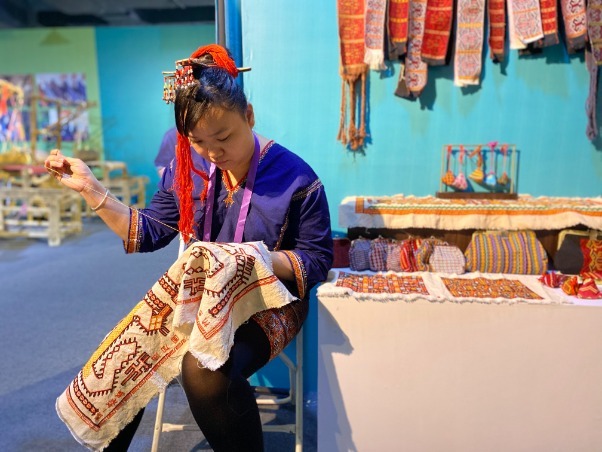Crafting prosperity
Intangible cultural heritage is being used to create jobs, Zhao Ruixue reports in Jinan.
By Zhao Ruixue | China Daily | Updated: 2020-10-30 07:52

Traditional handicrafts are getting a new life through poverty-reduction programs in China. The Sixth China Intangible Cultural Heritage Expo kicked off on Oct 23 in Jinan, East China's Shandong province, showcasing information about 46 poverty-alleviation projects that used intangible cultural heritage and 84 heritage items from across China.
Dressed in clothing bearing horsetail embroidery, Song Shuixian, a national-level inheritor of the intangible heritage of Sandu county in Southwest China's Guizhou province, promoted such embroidered products at the expo.
Horsetail embroidery uses horse hair and silk thread as raw material. The skill of weaving horse hair with thread and sewing traditional patterns has been passed down for generations by the Shui ethnic group in Guizhou.
"In the past, the embroidery appeared on small garments such as aprons, but now we put them on daily clothes, handbags and notebooks to increase the embroidery's commercial value and meet consumers' demand," Song says.
The 54-year-old ethnic Shui woman started learning horsetail embroidery from her mother as a child. Since then, she has dedicated herself to protecting and promoting the handicraft.
Following her suggestion, a center for protecting and inheriting horsetail embroidery was founded in Sandu last year.
"Now we have a better place to train more women in the skills of horsetail embroidery, and many of them are in their 20s and 30s," Song says.
To date, more than 1,000 women have been trained there, helping around 300 families overcome poverty.
























